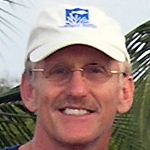New Advisory Group Focuses Efforts on Unmanned Aircraft Systems
Published: 3 March 2015
The Arctic is experiencing rapid climate change with nearly double the rate of surface warming observed elsewhere on the planet. Currently, the reasons for arctic amplification are not well understood, nor are the impacts to the global carbon cycle well quantified. Atmospheric researchers are using unmanned aircraft to study problems requiring frequent or long-duration observations in locations not easily, or safely, accessed by manned aircraft.
Through activities at the ARM Facility, the Climate and Environmental Sciences Division of the Office of Biological and Environmental Research within DOE is at the forefront of utilizing unmanned aircraft systems (UAS) as a tool to address science questions relating to Arctic research. Presently, the ARM site at Oliktok Point on the North Slope of Alaska contains restricted airspace in the Arctic, which makes it ideal for conducting UAS operations on a routine basis.
In February 2015, five recognized experts in UAS technology, management, and science applications agreed to form the ARM UAS Advisory Group. This team aims to provide scientific and technical advice to Sandia National Laboratories and Pacific Northwest National Laboratory leadership as they plan tethered balloon and UAS operations at the Oliktok Point site. The group will also provide input on potential UAS deployments at other locations of interest to the ARM Facility, as needed.
The UAS Advisory Group includes:
 |
Tim Bates, atmospheric chemist at NOAA’s Pacific Marine Environmental Laboratory and University of Washington/Joint Institute for the Study of the Atmosphere and Ocean |  |
Randy Berthold, UAS project manager for the biospheric science branch at NASA Ames Research Center |
 |
John Cassano, associate professor of atmospheric and oceanic sciences at the University of Colorado Boulder and researcher at NOAA’s Earth System Research Laboratory and Cooperative Institute for Research in Environmental Sciences |  |
Jerry Harrington, associate professor of meteorology at Pennsylvania State University |
 |
Martin Stuefer, assistant director at Alaska Climate Research Center and assistant research professor at the Geophysical Institute at the University of Alaska Fairbanks |
# # #
The ARM Climate Research Facility is a national scientific user facility funded through the U.S. Department of Energy’s Office of Science. The ARM Facility is operated by nine Department of Energy national laboratories.
The ARM Climate Research Facility is a DOE Office of Science user facility. The ARM Facility is operated by nine DOE national laboratories, including .
Keep up with the Atmospheric Observer
Updates on ARM news, events, and opportunities delivered to your inbox
ARM User Profile
ARM welcomes users from all institutions and nations. A free ARM user account is needed to access ARM data.


















